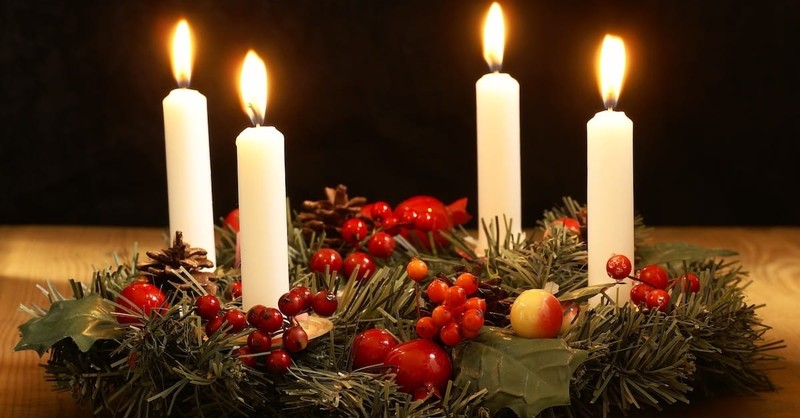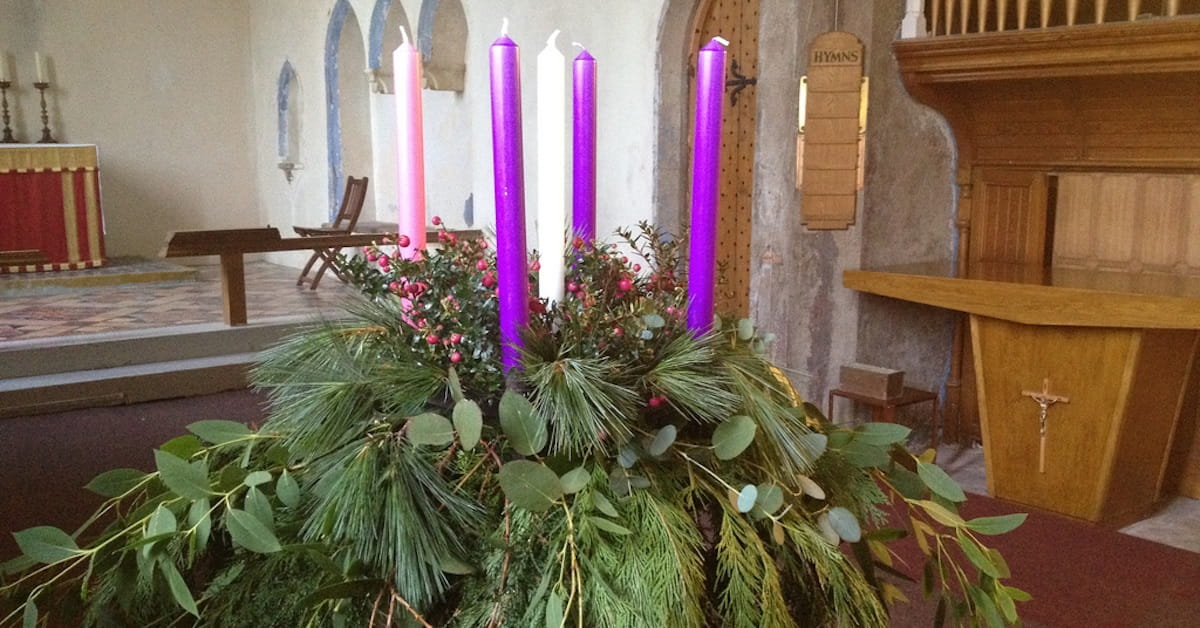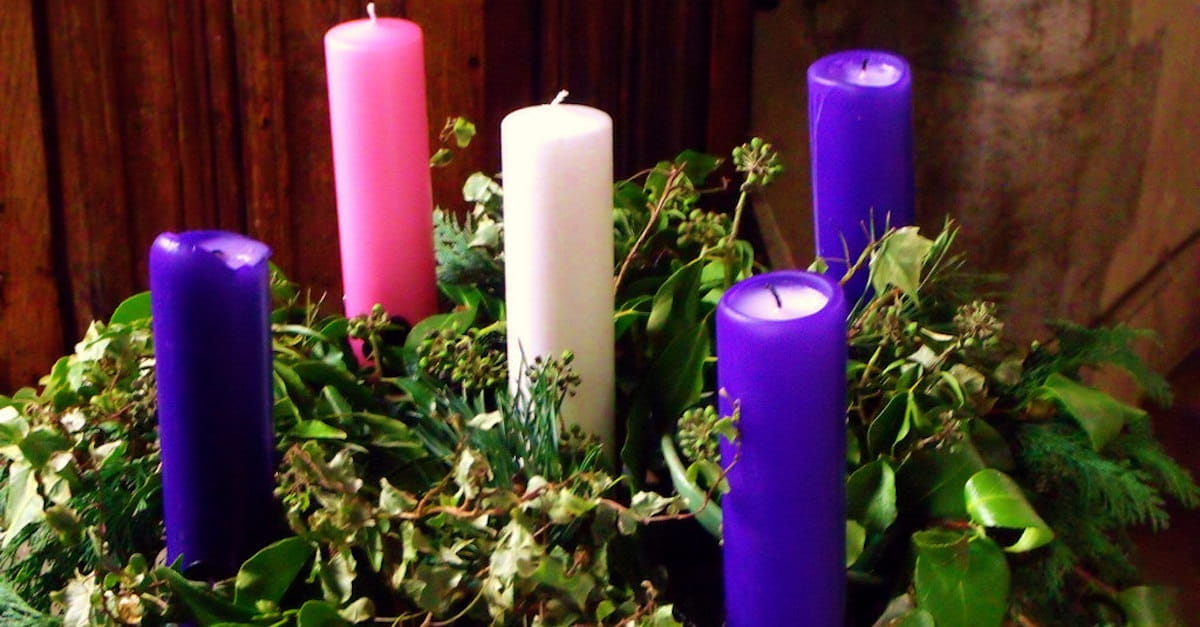Advent Wreath & Candles: Understanding the Meaning, History & Tradition

Advent is a time of expectation and hope. “Advent” means “arrival” or “coming,” and it prompts us to pause each day in December and remember why Jesus came at Christmas. Traditions vary by country, but common ways of commemorating Jesus’ birth are through Advent calendars, wreaths, and candles. Ideally, any Advent tradition should involve families in a fun activity each day of December, helping them remember why we celebrate Christmas.
The History of Advent
The word “Advent” is derived from the Latin word adventus, meaning “coming,” which is a translation of the Greek word parousia. Most know Advent today as a time of anticipation and expectation of the birth of Christ. However, Advent began as early as the 4th and 5th centuries as a time of fasting and prayer for new Christians. The first mention of Advent occurred in the 300’s A.D at a meeting of church leaders called the Council of Saragossa. It gradually developed into a season that stretched across the month of December. Advent lasts for four Sundays leading up to Christmas. The Advent season not only symbolizes the waiting for Christ's birth but also for his final return.
What Is the Advent Wreath?

The Advent wreath first appeared in Germany in 1839. A Lutheran minister working at a mission for children created a wreath out of the wheel of a cart. He placed twenty small red candles and four large white candles inside the ring. The red candles were lit on weekdays and the four white candles were lit on Sundays.
Eventually, the Advent wreath was created out of evergreens, symbolizing everlasting life in the midst of winter and death as the evergreen is continuously green. The circle reminds us of God’s unending love and the eternal life He makes possible.
The Advent wreath is a symbol of the season, with a candle lit each of the four Sundays leading up to, and on Christmas Day. The light of the flickering candle flames reminds us who Jesus is: “In him was life, and that life was the light of all mankind. The light shines in the darkness, and the darkness has not overcome it.” (John 1:4-5). Advent candles are often nestled in the evergreen wreath. We will go further detail on the purpose and meaning behind each advent candle below. Additional decorations, like holly and berries, are sometimes added. Their red color points ahead to Jesus’ sacrifice and death on the cross, shedding his blood for our sins.
Pinecones can symbolize the new life that Jesus brings through His resurrection. Families begin lighting a candle on the fourth Sunday before Christmas, and they light another candle each subsequent Sunday.
Meaning & Symbolism of the Advent Candles

Advent candles shine brightly in the midst of darkness, symbolizing and reminding us that Jesus came as Light into our dark world. The candles are often set in a circular Advent wreath. In Scandinavia, Lutheran churches light a candle each day of December; by Christmas, they have twenty-four candles burning. Another Advent candle option is a single candle with twenty-four marks on the side--the candle is lit each day and allowed to melt down to the next day’s mark.
The most common Advent candle tradition, however, involves four candles around the wreath. A new candle is lit on each of the four Sundays before Christmas. Each candle represents something different, although traditions vary. Often, the first, second, and fourth candles are purple; the third candle is rose-colored. Sometimes all the candles are red; in other traditions, all four candles are blue or white. Occasionally, a fifth white candle is placed in the middle of the wreath and is lit on Christmas Day to celebrate Jesus’ birth.
- The first candle symbolizes hope and is called the "Prophet’s Candle." The prophets of the Old Testament, especially Isaiah, waited in hope for the Messiah’s arrival. The purple color symbolizes royalty, repentance, and fasting.
- The second candle represents faith and is called "Bethlehem’s Candle." Micah had foretold that the Messiah would be born in Bethlehem, which is also the birthplace of King David. The second candle is also purple to symbolism preparation for the coming king.
- The third candle symbolizes joy and is called the "Shepherd’s Candle." To the shepherd’s great joy, the angels announced that Jesus came for humble, unimportant people like them, too. In liturgy, the color rose signifies joy. This candle is colored pink to represent joyfulness and rejoicing.
- The fourth candle represents peace and is called the "Angel’s Candle." The angels announced that Jesus came to bring peace--He came to bring people close to God and to each other again. This color is also purple to represent the culmination of love through the Messiah.
- The (optional) fifth candle represents light and purity and is called "Christ’s candle." It is placed in the middle and is lit on Christmas Day. This candle is white to represent pure light and victory.
Other Advent Traditions
A few other Advent traditions practiced across the world include the following:
-In Eastern Orthodox churches, believers participate in a Nativity Fast that begins November 15 and ends December 24. In this fast, they abstain from meat, dairy, fish, wine, and oil. They hope the fast will help them to better fix their eyes on God and His Kingdom.
-In much of the Spanish-speaking world, a custom called “Posadas” is practiced. “Posadas” means “shelter” or “lodging,” and it is done from December 16-24. A group of people re-enact Joseph and Mary’s journey from Nazareth to Bethlehem. They plan a route and travel from house to house, asking for lodging. Each home plays the role of “innkeeper” and refuses to host them. At the last house, everyone is invited inside for prayer and refreshments.
-The Jesse tree involves homemade ornaments that are hung on a small tree. The ornaments represent an Old Testament prophecy about Jesus, or they may represent ancient ancestors in the lineage of Jesus. Various books are available to use along with the Jesse ornaments.
-Santa Lucia (or St. Lucy) is done on the morning of December 13. The oldest daughter in the house dresses in a white robe with a red sash, and she wears a wreath with lighted candles on her head. She carries a breakfast of coffee, gingerbread cookies, and saffron buns to her parent’s bedroom. The younger daughters follow the eldest, carrying a single candle. The brothers, called “star boys,” wear tall, pointed hats.
-In China, Christians light their homes with decorative paper lanterns. Some also decorate a “Tree of Light” with paper chains or flowers.
-The first printed Advent calendar was created in 1908 by a German named Gerhard Lang. As a boy, his mom would sew twenty-four cookies onto the lid of a box. Each day of December, he ate a cookie. This tradition inspired him to create a calendar entitled, “In the Land of the Christ Child.” Today, Advent calendars are a popular tool for families to count down the days until Christmas.
No matter how we choose to celebrate the season of Advent, let's remember the beauty and grace of Jesus. He entered our dark, broken world on the first Christmas long ago, and He’s working even now to restore light, peace, and life. May your family find rich blessings from incorporating the advent wreath and other traditions into your celebration of this season.
Laura Richie is a wife, homeschooling mom to three, and a registered nurse. After writing The Advent Storybook for her own children, Laura felt called to publish the book and share the story of God’s rescue with families across the world.
No comments:
Post a Comment